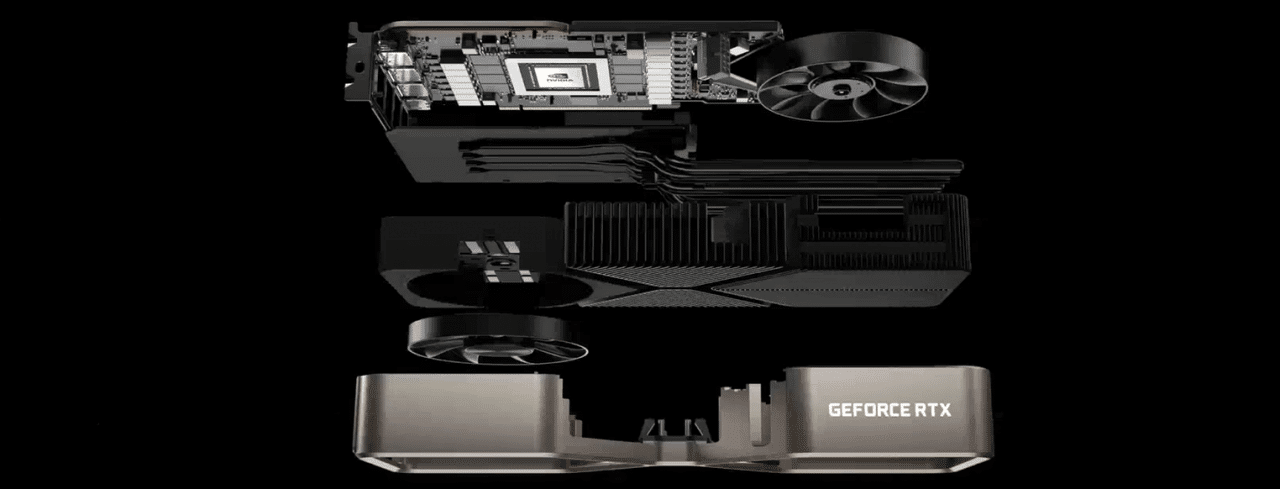During Tuesday’s unveiling of the Ampere architecture and the Geforce RTX 3000 series, Nvidia, among other things, made the claim that they managed to lower the temperature by 30 ° C on the Geforce RTX 3090 compared to the previous flagship Titan RTX. The statement was accompanied by pictures of a seemingly innovative cooling solution push-pulleffect and smart control of air flow.
During yesterday’s technology review that Nvidia held for the media, the company went into details and explained more clearly what they mean by their statement about the temperature, and here we can state that Nvidia has been a little too generous in its description. What they have done is a thought experiment rather than an actual comparison. As in “what if Titan RTX had drawn 350 W just like RTX 3090” and under these conditions the previous card had thus gone 30 ° C warmer than the newcomer.
The same comparison is made between the Geforce RTX 2080 and the Geforce RTX 3080, but even there under the premise “what if the RTX 2080 had drawn 320 W just like its successor”. The difference becomes less marked here with the alleged 20 ° C difference. In addition to cooler temperatures, Nvidia believes that in these theoretical scenarios there would be a difference in sound level between 10 and 20 dBA.
We do not doubt that Nvidia has made progress with its reference coolers in terms of both sound level and performance, but can at the same time coldly state that the examples shown, to put it mildly, are difficult to draw any conclusions from.
It becomes clearer when we look at the cooling device and circuit board where Nvidia really thought outside the box before the Ampere launch. The two-fan solution is divided into a fan that pushes air out of the back of the chassis while the other fan draws air from below the graphics card through its heat sink and up above the card.
The design is made possible by Nvidia’s new compact circuit board, which can be described as a V-shape at one end. This compact design allows the rear fan to draw air straight through the graphics card heat sink and out the other side. The solution is designed to be optimal in the chassis with traditional air flow with intake in the front lower part of the chassis and exhaust in its rear upper part.
The need for the new cooling solutions is something Nvidia pointed out early in their presentation when they described how they designed the Ampere to scale with higher power output than they did with the Turing architecture behind the Geforce RTX 2000 series. While Turing leveled out in terms of performance at around 240 W, the Ampere has been designed to be able to scale in terms of performance with even higher power outputs up to 350 W.
Greater power outputs will result in higher heat generation and given that the stated TBP (Total Board Power) has increased by almost 50 percent between the generations, it is obvious that Nvidia needed to rethink their reference cooler. How well it works in practice, we will return to when we have had to put the cards to the test in our test lab.
Are you hungry for a Founders Edition card or are third party cards of greater interest?















